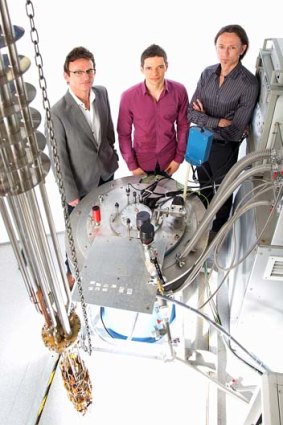By Nicky Phillips
THE device is smaller than a human hair, but it marks a significant advance in the race to engineer a super-fast, super-powerful quantum computer.
Australian scientists have built the world's first quantum bit, the basic data unit in quantum computers, based on a single phosphorus atom implanted in a silicon chip. Quantum computers will use the strange properties of atoms to perform calculations billions of times faster than today's computers.
"If you have just 300 quantum bits, the amount of information that can be stored is more than all the computers in the world put together," said one of the research leaders, Andrew Dzurak, a nano-electronics professor at the University of NSW.
Today's computers store data in binary code, a collection of 1s and 0s. The single atom quantum bit, or qubit, which took teams at the University of NSW and the University of Melbourne more than a decade to develop, stores information in the single electron that circles the atom.

Project leaders Andrea Morello (left), with PhD student and lead author Jarryd Pla (centre).
UNSW's Andrea Morello, another research leader, said electrons behave like a tiny magnet, due to a property called spin, and can be oriented in different directions using microwave radiation. When the electron points up it represents a binary code of 1, while an electron pointing down means a binary code of 0.
"That's the way we encode information," said Dr Morello, whose findings are published in the journal Nature.
But the unique properties of electrons meant they could point up and down at the same time, which would double the amount of information encoded on a quantum computer with each additional qubit.
"If you can make a computer that can do that, you can program it in a completely different way and solve certain problems that are impossible on normal computers," said Dr Morello, who was a student when the idea of building a single atom qubit was first suggested.
Quantum computers held the promise of solving complex computation problems that were impossible for today's computers, including fast database searches, cracking encryption codes and modelling complex molecules and drugs.
Professor Dzurak believes basic quantum computers will be available in the next five to 10 years.